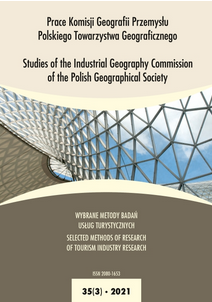Assessment of the impact and interrelation of UNESCO World Heritage on the tourism attractiveness of the country
Assessment of the impact and interrelation of UNESCO World Heritage on the tourism attractiveness of the country
Author(s): Vitalii Ivanunik, Halyna Krul, Stepan BrykSubject(s): Cultural history, Preservation, Economic development, Tourism
Published by: Wydawnictwo Uniwersytetu Komisji Edukacji Narodowej w Krakowie
Keywords: international touristic arrivals; tourism attractiveness; Travel and Tourism Competitiveness Index; UNESCO World Heritage;
Summary/Abstract: This work aims to investigate the impact of popular UNESCO World Heritage objects on the country’s tourist arrivals as a factor of attractiveness, to estimate the strong correlation between these phenomena, and to mathematically validate the assumption that the number of such sites has a direct impact on the country’s tourism competitiveness. We used data from the UNWTO’s open sources, UNESCO, the World Economic Forum expert reports on the competitiveness of travels and tourism of the world’s countries for 2017. The analysis is based on three rankings of countries in terms of World Heritage assets, international touristic arrivals and the country’s tourism and travel competitiveness index, and correlation analysis between these values. Also, to determine the influence and interdependencies between the studied concepts, the method of paired correlation analysis was chosen as a convenient way to demonstrate the influence of one variable on another. Determination of the correlation coefficient allowed to speak about the complexity of the relationship and the linearity of these phenomena. In particular, the increase in the number of UNESCO World Heritage sites leads to an increase in tourist arrivals and makes the country attractive for tourism development. As a result, we have obtained estimates of the unidirectional impact of the number of World Heritage sites on the territory of a particular country on the volume of international tourist arrivals. However, not always the overall attractiveness and competitiveness of the country in the field of tourism is linked to the World Heritage, and our study only confirms the thesis that among the many ways to increase the attractiveness of the country, an increase in World Heritage sites leads to an increase in tourist traffic. In current trends, choosing public policy to enhance and preserve UNESCO sites one obviously can expect the growth of tourist flows to the countries.
Journal: Prace Komisji Geografii Przemysłu Polskiego Towarzystwa Geograficznego
- Issue Year: 35/2021
- Issue No: 3
- Page Range: 186-204
- Page Count: 19
- Language: English

